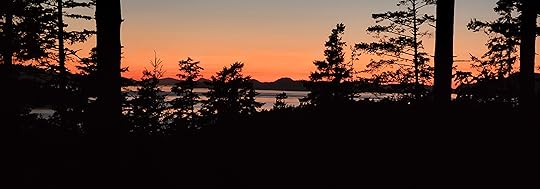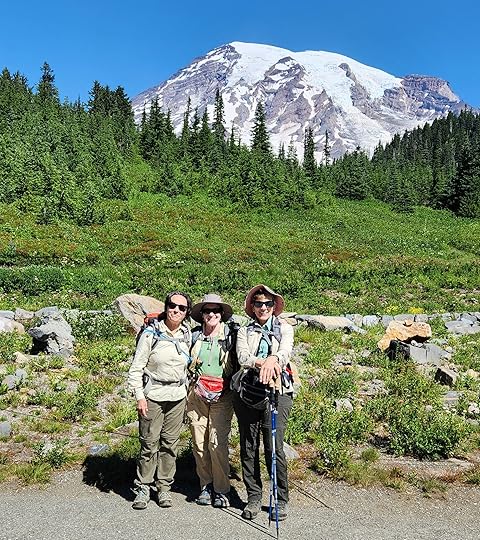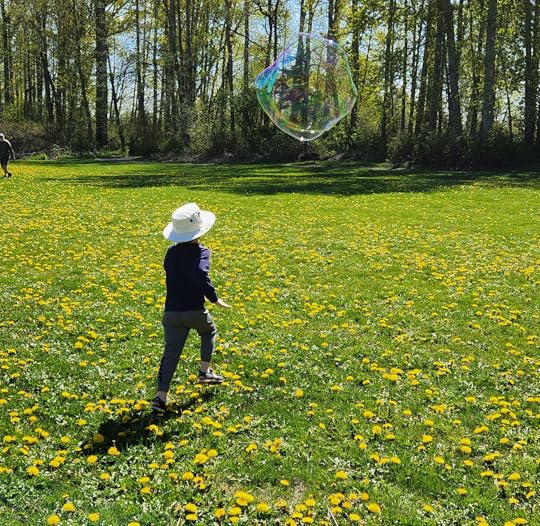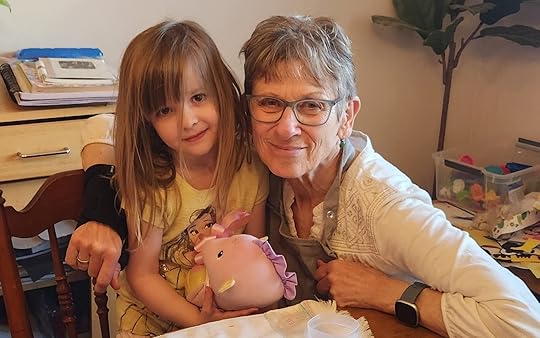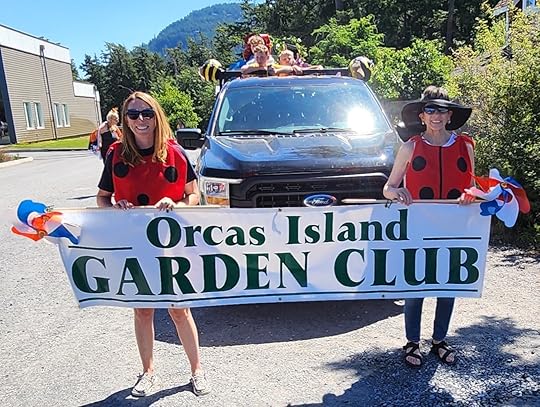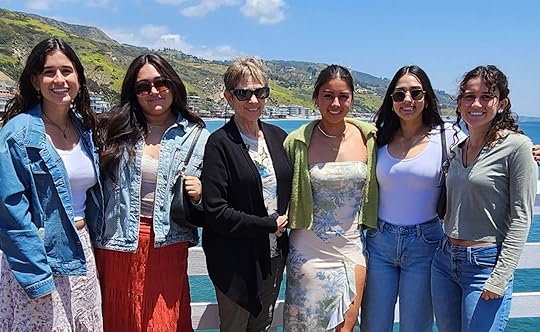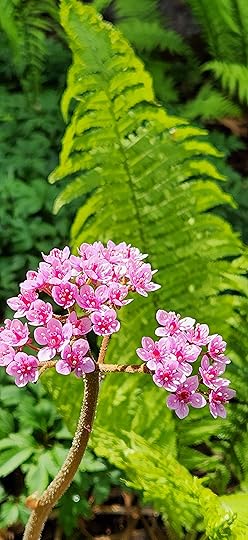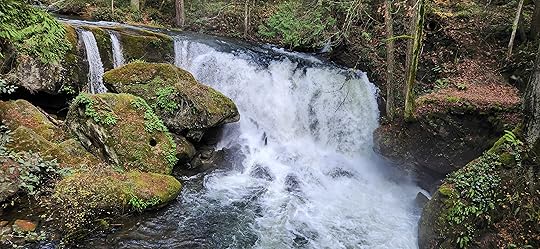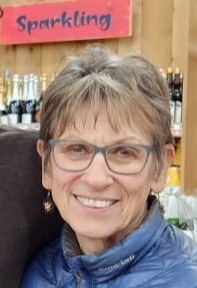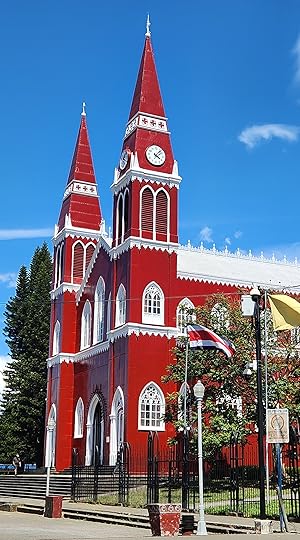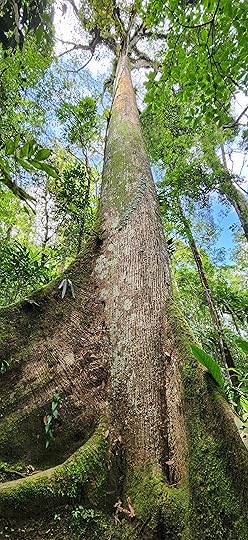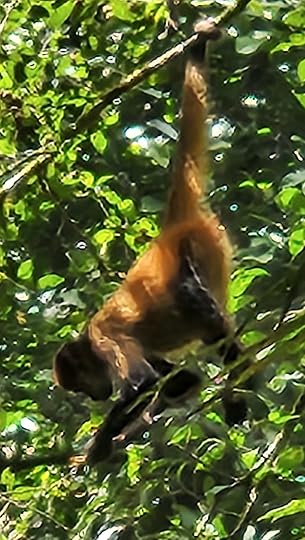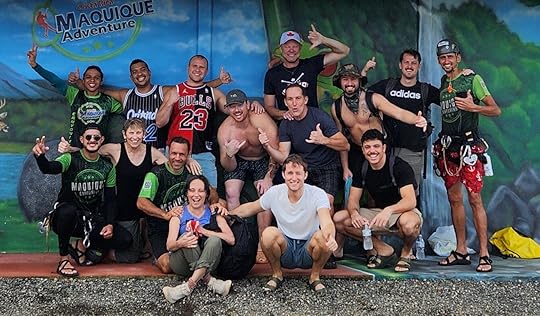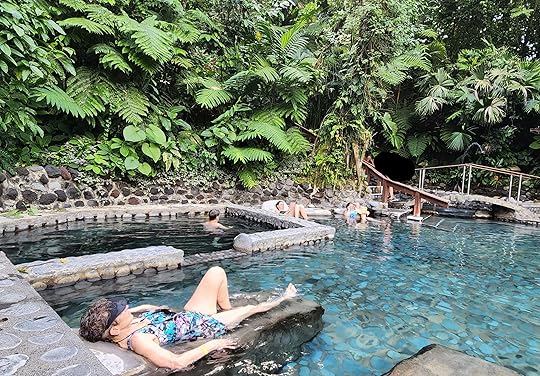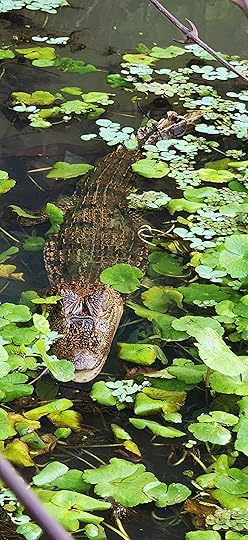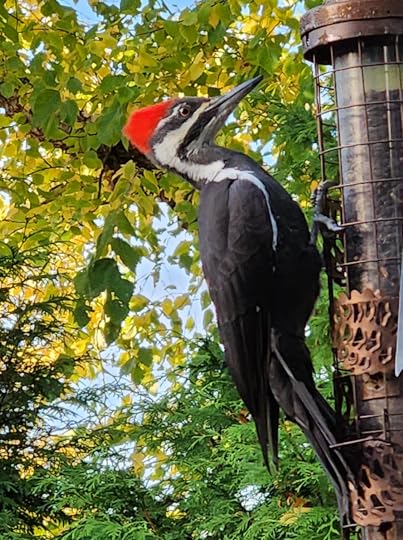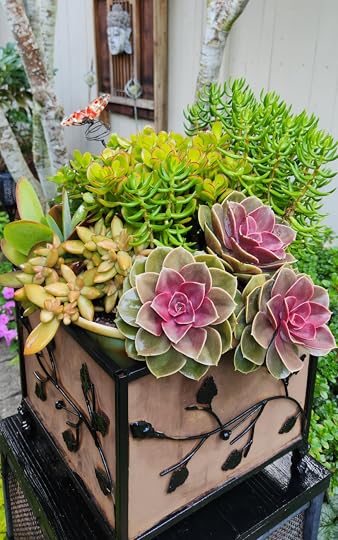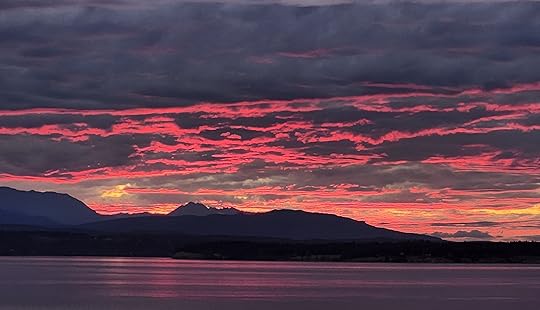Susan E. Greisen's Blog, page 2
May 31, 2025
A Poem for the Ages
This blog title uses the word ages in its literal translation. Therefore, this poem depicts my journey toward accepting my own aging process. I’ve been a relatively healthy 74 year old engaging in a variety of physical and mental activities that keep me vital and active.
My poem, My Sacred Temple was accepted for an anthology publication entitled A World Unsuspected. I read it at a book launch on May 3rd, 2025 in Bellingham, Washington. Read the entire poem below.
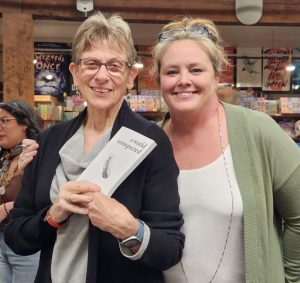
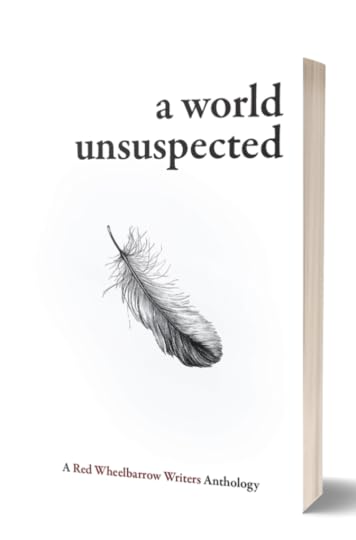 My Sacred Temple
My Sacred Temple by Susan E. Greisen 12/24
My Sacred Temple is crumbling
45 years of yoga have forsaken me
I can no longer do the full bridge pose
Even though I did it once correctly
My wrists don’t flex
My back won’t bend
My neck is tight
My groins don’t extend
Has my yoga ship sailed?
Is it perfection I seek?
Yoga was once my salvation
But now my muscles are weak
Hip and wrist arthritis
Found a new home in my joints
Once soothing yoga poses
Have become sore sticking points
Child’s pose now hurts
Downward dog requires props
I can’t hold most poses for long
Let me finish and lie like a corpse
Secretly I admit the sole reason I go
To seek my luxurious retreat
The sauna melts my aches and pains
They love the nurturing heat
My yoga instructors gently
Guide me through the routine
I listen to their messages
Some that are not always obvious or seen
I was surprised one day by the question
“What do you want to keep?”
“Compassion and Love” are what I found
When I looked deep
Gradually I awakened and discovered
My yoga buddies I didn’t always see
I rarely noticed their impact
Their collective positive energy
Some with healing fractures, chronic arthritis,
Joint replacement, or cancer mayhem
Their diagnoses make me seem young
Yet they never let it bother them
During our yoga practice
We are not to look and compare
So, what am I moaning about
Thinking life is unfair
Many in my classes are older than me
Some a decade or more
We have known each other for several years
Next to them, I lie my mat on the floor
Steph and Karen in their upper 70s
Pat and Jim in their 80s, and Jane is 89
I covertly look for them during my practice
Whenever I want to moan or whine.
Dementia has a grip on Sonia at 82
Her companion guides her poses
Once a European child of war
Her smile is like a bouquet of roses
Robert, 84, limps in with chronic pain
Carolyn battles her third cancer at 82
They are my chair yoga buddies
My self-gratitude is way overdue
I modified some of my poses
To not cause so much pain
This change to my practice
Is for those who are more sane
Maybe I’ll complain and feel sorry for myself
But only for a moment
Because I will look for my yoga buddies
And banish my sorrow and judgment
My yoga family inspires me
They have shown me this is just another stage
Because of them and their guidance
My Sacred Temple is full of yoga that doesn’t have an age
More about Susan’s writing at https://susangreisen.com/
A World Unsuspected (2025) published by Sidekick 2 responses to “A Poem for the Ages”
 phsandovalMay 31, 2025
phsandovalMay 31, 2025Yes indeed. Age is only a number and I at 90 with heart problems. 2 hip surgery plus other things still look at my glass half full.
eat desserts first as it’s stressed spelled backwards
congratulations on your new project!
LikeLike
Reply Dale GillesMay 31, 2025
Dale GillesMay 31, 2025Luv ya, darlin’!! Yoga or not!!
LikeLike
Reply Leave a comment Cancel replyΔdocument.getElementById( "ak_js_1" ).setAttribute( "value", ( new Date() ).getTime() );
April 19, 2025
New Publication: How Time and Place Inspire Poetry
I was challenged to write a piece for our writers’ organization, Red Wheelbarrow Writers, to be published in a collective anthology. Here was the assignment:
Submit fiction, nonfiction, and poetry that captures the importance of a particular place and its power to surprise, transform and inspire. Keen observation of everyday scenes reveals how simple, seemingly mundane encounters can have a profound impact. We are looking for pieces that explore how the experience of a place can alter perspective, shift understanding, or spark a revelation. Take us on a journey in your unique voice to a place as small as a room or as big as a country and tell us what happens there! The title of the anthology will be A World Unsuspected.
I had only two weeks to submit my piece. I had taken some poetry classes recently, including the art of rhyming. I could write a rhyming poem. Way too much work, I thought. Besides, poetry has to be inspired from within, not an assignment. And writing prose would take me weeks. So, as a test, I threw myself into the abyss of rhyming poetry. I was pleasantly surprised. Within two to three hours, I had a finished poem entitled, My Sacred Temple, that fit the goal perfectly. I was so touched by the message and my personal journey that I cried the first several times I read it. I received permission from my yoga family to use their real names. When I read it to all my yoga classes, everyone was touched and inspired.
For those living locally in Bellingham, WA and want to attend the book launch and my reading of the poem, please register at Village Books. You may also purchase the book via Village Books or Ingram the distributor.
I will add the poem on my website in its entirety at a later date.
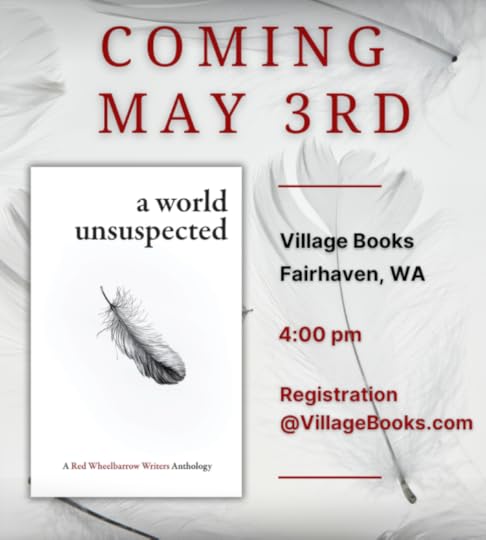
Surprising Journey: How Time and Place Inspire Poetry
I was challenged to write a piece for our writers’ organization, Red Wheelbarrow Writers, to be published in a collective anthology. Here was the assignment:
Submit fiction, nonfiction, and poetry that captures the importance of a particular place and its power to surprise, transform and inspire. Keen observation of everyday scenes reveals how simple, seemingly mundane encounters can have a profound impact. We are looking for pieces that explore how the experience of a place can alter perspective, shift understanding, or spark a revelation. Take us on a journey in your unique voice to a place as small as a room or as big as a country and tell us what happens there! The title of the anthology will be A World Unsuspected.
I had only two weeks to submit my piece. I had taken some poetry classes recently, including the art of rhyming. I could write a rhyming poem. Way too much work, I thought. Besides, poetry has to be inspired from within, not an assignment. And writing prose would take me weeks. So, as a test, I threw myself into the abyss of rhyming poetry. I was pleasantly surprised. Within two to three hours, I had a finished poem entitled, My Sacred Temple, that fit the goal perfectly. I was so touched by the message and my personal journey that I cried the first several times I read it. I received permission from my yoga family to use their real names. When I read it to all my yoga classes, everyone was touched and inspired.
For those living locally in Bellingham, WA and want to attend the book launch and my reading of the poem, please register at Village Books. You may also purchase the book via Village Books or Ingram the distributor.
I will add the poem on my website in its entirety at a later date.

February 27, 2025
Moroccan Sheep Migration: A Nomadic Tradition
(Click on the two video links below)
Our OAT Tour (Overseas Adventure Tour) was winding through the mid-Atlas Mountains of Morocco in 2024 when our guide, Mohamed told our driver to stop the bus and said with excitement, “Come and look!” Mohamed is Amazigh or Berber as Westerners call the indigenous people. (Amazigh is their original ethnic name. The word “Berber” comes from the Latin word barbarus, which was used by the Romans to describe non-Latin-speaking people. The term is considered offensive by many Berbers today.).
He pointed our gaze to the crop of mountain terrain that consisted of medium to large beige boulders some the size of a refrigerator. I strained my eyes to see nothing interesting. “Look closer. See the movement?” he exclaimed.
I was perplexed by his excitement. Squinting and scanning, I began to see it. At the base of the boulder cropping where it flattened to meet the sand, I saw something that appeared to be moving boulders all streaming toward the sand.
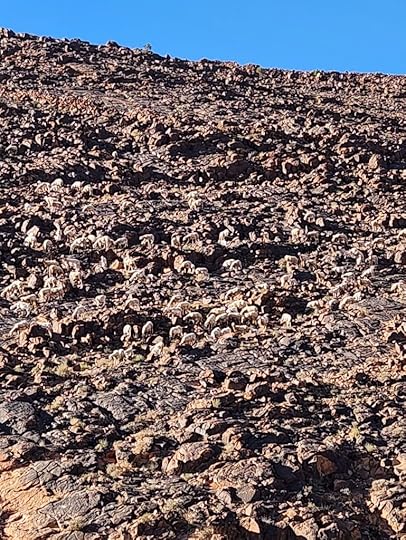
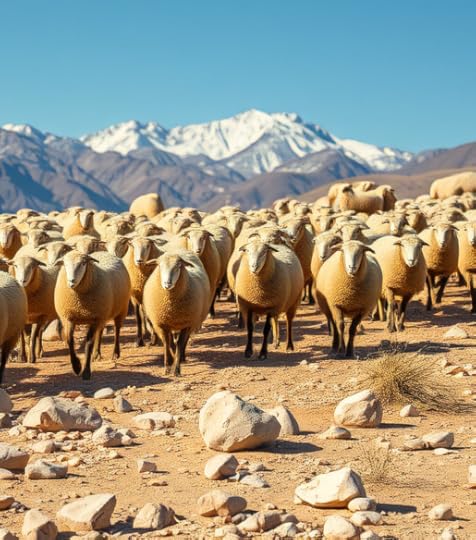
Then I realized they were sheep; hundreds and hundreds of Indigenous sheep most likely the Boujaad Breed of livestock.
Earlier in the summer when the valley temperatures soared to over 120 F. they moved the sheep to the cooler mid-upper Atlas mountains for grazing.
On December 20th, two days before our arrival, it had snowed for the first time where they had been grazing all summer. The annual migration had begun with hundreds of sheep moving to the lower elevation for grass and water. Mohamed told us about three women, a young boy, and an older man with three dogs who were part of this effort. The rest of the family was back at the higher elevation and would join the herd more gradually with their possessions.
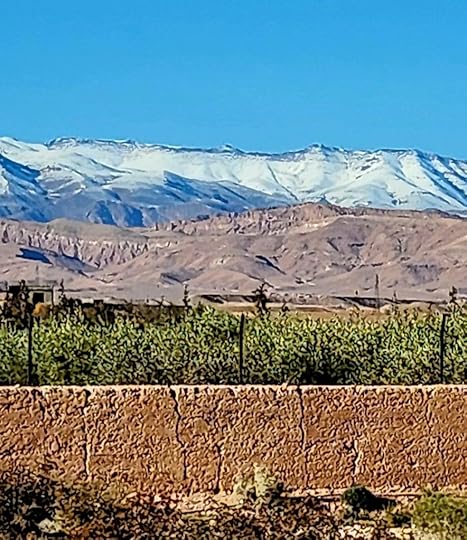
I switched to video to film the mountain in motion. It was mesmerizing. When the sheep saw the first greenery, they raced to it, mothers and babies about 2 weeks old. Check this video.
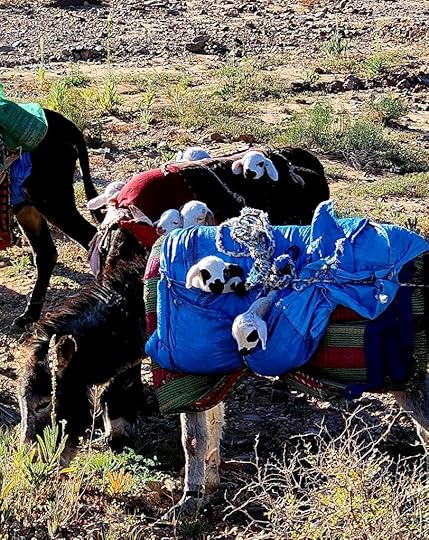
Then to my left was another sight. Donkeys packed with newborn lambs nestled in their side packs, too young to walk the miles of terrain. We were all speechless.
This was equal to witnessing the wildebeest, elephant, or flamingo migrations in East Africa. A twice-a-year event when only time and place are on your side. We were so fortunate.
It is unclear but it is thought Moroccan nomadic sheep migration/domestication goes back about 7000 years ago.
This experience is at the top of my most treasured moments. Witnessing life in its rawest form, no luxury, no veneer.
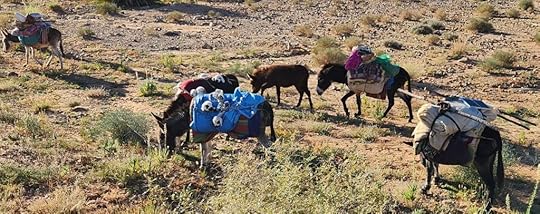
Subscribe to receive periodic blogs
Leave a comment Cancel replyΔdocument.getElementById( "ak_js_1" ).setAttribute( "value", ( new Date() ).getTime() );
February 15, 2025
African-American History Month: Part II, Two Sides of History
(All the photos were taken on my visit in 2010, the last three are computer generated. Click on any highlighted link for more information)
In my 2010 visit to the Deep South, it appeared on the surface that the lives of black people had improved from my visits a few decades earlier; I didn’t see the obvious shanties and segregation signage. But from the mouth of my white tour guide, I sensed the US had a long way to go to end racism and to realize equality for all. See Part I, my last blog.
Continuing my travel to Savannah, Georgia brought some refreshing relief with some integration of Blacks and Whites in the workplace. However, a white-guided bus tour continued to downplay the slave trade and omit their role in building Savannah to its greatness. I decided to find the other side of the story.
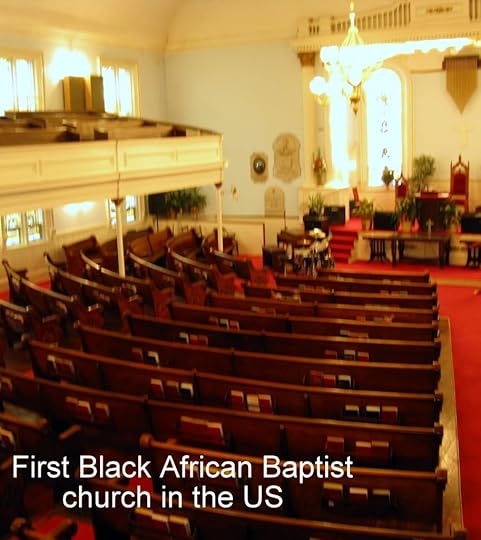
I took to the streets looking for a Black History tour. Contrary to the white tour operators on nearly every corner, I searched long and hard for anyone to guide me. Through an African-American street vendor and finally, three locations later, I was led to the basement of the historic First Black African Baptist Church. The friendly church secretary led me to an African-American guide who conducted Black history tours of Charleston.
The contrasting tour was striking as he took me and two other Black couples to parts of Savannah the white guide never noted. He described the horrendous discrimination documented in the county records of land purchases denied blacks and unjust incarcerations. We visited the only Black History Museum in Savannah located in a converted storefront where I found the infamous segregated bathroom signage like the one I saw in Atlanta in 1978.
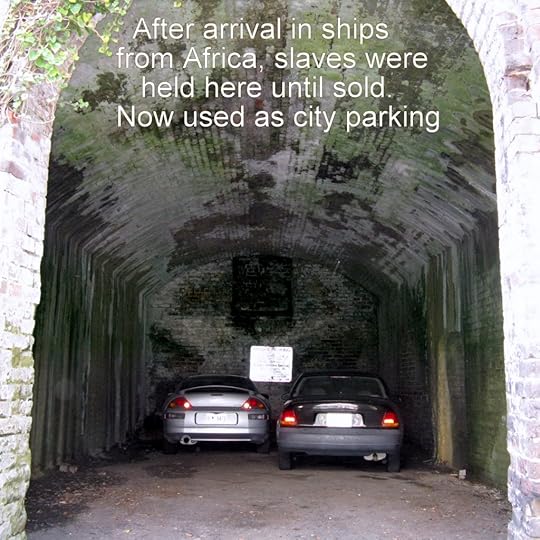
On our Black history tour around Savannah, he stopped in front of the holding pens, a cave-like structure on the side of a cliff, where up to twenty-five chained slaves were held after trudging from the transatlantic ships. He pointed to a chute at the top of the cave where food scraps were dumped once a day. Like an animal, this human commodity was sold to the highest bidder.
Our original white tour bus drove past this area a day earlier and never mentioned it. Rather than denote this cave’s historical significance, the government now uses it to park cars for the Assistant City Manager.

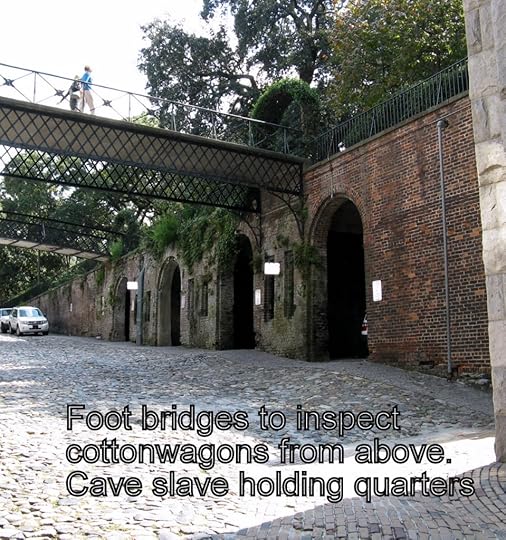
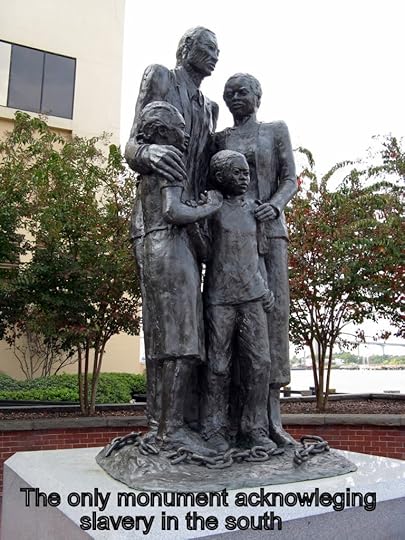
Our final destination displayed the only Charleston monument to honor the freed African slaves. Erected in 2002 and created by the College of Arts and Design, this monument in 2010 was still looking for donations to help pay for the debt of this beautiful commemorative piece; a somber, bronze statue of a family of four with broken chains at their feet.
The monument inscription below.
We were stolen, sold and bought together from the African continent. We got on the slave ships together. We lay back to belly in the holds of the slave ships in each other’s excrement and urine together, sometimes died together, and our lifeless bodies thrown overboard together. Today, we are standing up together, with faith and even some joy.
Maya Angelou
The movement to address these white symbols of oppression came to a head in Charlottesville, VA on August 12, 2017, when the Confederate Statue of Robert E. Lee was removed. It sparked a deadly protest that led to one death and multiple injuries. I wondered if the egregious pains of our history would be better placed in a museum and not revered on every corner as I witnessed during my 2010 visit to Savannah.
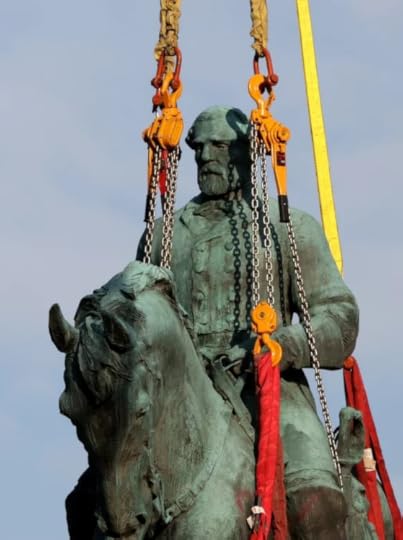
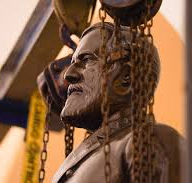
Finally, the resting place of Robert E Lee is in the Black History Museum and Cultural Center of Virginia as of 2021.
One can’t help but notice the chains surrounding Robert E. Lee in these images to that of the chains of the earlier slaves, or the psychological chains around many African-Americans today.
Over 700 Confederate markers and monuments remain in the Deep South, now protected by the laws of those states. Are these ever-lasting symbols current reminders that dictate the true beliefs of that region of America?

I am pleased to discover that there is now a permanent Black Heritage and Cultural Center in Savannah with Black-guided tours and the International African American Museum in Charleston which opened in 2023. I encourage you to visit these at your next stopover. Some progress has been made!
I welcome your experiences in the Deep South in the comment section below.
Join my Mailchimp audience
By sharing your email, you agree to periodic blogs from me. Use the unsubscribe link in those emails to opt-out at any time.
Processing… Success! You're on the list. Whoops! There was an error and we couldn't process your subscription. Please reload the page and try again.African-American History Month: Part II, A White Woman’s Perspective
(All the photos were taken on my visit in 2010, the last three are computer generated. Click on any highlighted link for more information)
In my 2010 visit to the Deep South, it appeared on the surface that the lives of black people had improved from my visits a few decades earlier; I didn’t see the obvious shanties and segregation signage. But from the mouth of my white tour guide, I sensed the US had a long way to go to end racism and to realize equality for all. See Part I, my last blog.
Continuing my travel to Savannah, Georgia brought some refreshing relief with some integration of Blacks and Whites in the workplace. However, a white-guided bus tour continued to downplay the slave trade and omit their role in building Savannah to its greatness. I decided to find the other side of the story.

I took to the streets looking for a Black History tour. Contrary to the white tour operators on nearly every corner, I searched long and hard for anyone to guide me. Through an African-American street vendor and finally, three locations later, I was led to the basement of The First Black African Baptist Church. The friendly church secretary led me to an African-American guide who conducted Black history tours of Charleston.
The contrasting tour was striking as he took me and two other Black couples to parts of Savannah the white guide never noted. He described the horrendous discrimination documented in the county records of land purchases denied blacks and unjust incarcerations. We visited the only Black History Museum in Savannah located in a converted storefront where I found the infamous segregated bathroom signage like the one I saw in Atlanta in 1978.

On our Black history tour around Savannah, he stopped in front of the holding pens, a cave-like structure on the side of a cliff, where up to twenty-five chained slaves were held after trudging from the transatlantic ships. He pointed to a chute at the top of the cave where food scraps were dumped once a day. Like an animal, this human commodity was sold to the highest bidder.
Our original white tour bus drove past this area a day earlier and never mentioned it. Rather than denote this cave’s historical significance, the government now uses it to park cars for the Assistant City Manager.



Our final destination displayed the only Charleston monument to honor the freed African slaves. Erected in 2002 and created by the College of Arts and Design, this monument in 2010 was still looking for donations to help pay for the debt of this beautiful commemorative piece; a somber, bronze statue of a family of four with broken chains at their feet.
The monument inscription below.
We were stolen, sold and bought together from the African continent. We got on the slave ships together. We lay back to belly in the holds of the slave ships in each other’s excrement and urine together, sometimes died together, and our lifeless bodies thrown overboard together. Today, we are standing up together, with faith and even some joy.
Maya Angelou
The movement to address these white symbols of oppression came to a head in Charlottesville, VA on August 12, 2017, when the Confederate Statue of Robert E. Lee was removed. It sparked a deadly protest that led to one death and multiple injuries. I wondered if the egregious pains of our history would be better placed in a museum and not revered on every corner as I witnessed during my 2010 visit to Savannah.


Finally, the resting place of Robert E Lee is in the Black History Museum and Cultural Center of Virginia as of 2021.
One can’t help but notice the metaphoric chains surrounding Robert E. Lee in these images to that of the chains of the earlier slaves, or the psychological chains around many African-Americans today.
Over 700 Confederate markers and monuments remain in the Deep South, now protected by the laws of those states. Are these ever-lasting symbols current reminders that dictate the true beliefs of that region of America?

I am pleased to discover that there is now a permanent Black Heritage and Cultural Center in Savannah with Black-guided tours and the International African American Museum in Charleston which opened in 2023. I encourage you to visit these at your next stopover. Some progress has been made!
I welcome your experiences in the Deep South in the comment section below.
Join my Mailchimp audience
By sharing your email, you agree to periodic blogs from me. Use the unsubscribe link in those emails to opt-out at any time.
Processing… Success! You're on the list. Whoops! There was an error and we couldn't process your subscription. Please reload the page and try again.February 8, 2025
African-American History Month: Part I, Two Sides of History
My first visit to the Deep South was in 1978. Everything was new, and I was awestruck by the beauty and magnificence of the historical mansions and plantations. My curiosity about the area was heightened during my second stopover in 1988. However, during my third visit in 2010, a tour guide’s words shook me to my core, and I wondered if I was getting the full story of what happened in this part of the country decades ago.
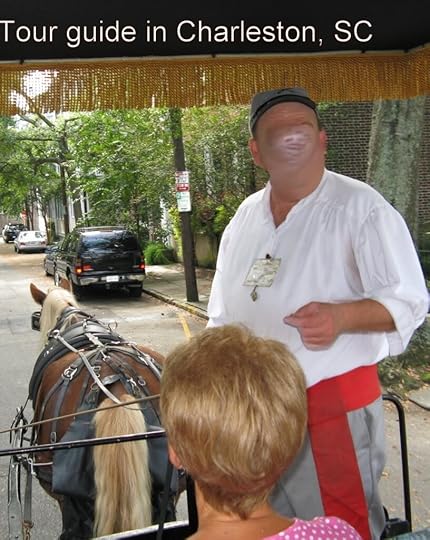
I took a guided horse and carriage tour to gain a historical perspective. This white tour operator (my photo with his face erased) turned to the all-white tourists and proudly said, “Most people believe that the main reason for the Civil War was because of slavery, but it was actually because of politics and taxes. With the Confederates seceding from the Union, they would take the revenue with them.” Our guide went on to say, “Charleston, in its heyday, was the wealthiest city in the Union.” As the tour continued, he glorified the Confederate Statues and monuments that were on every corner while underplaying the history of slavery.
Some whites on the tour nodded in agreement. Even though I’m white and have a feeble knowledge of American history, I learned from my two prior visits to the Deep South that the wealth and prosperity of this region resulted from slaves. The man-made dikes surrounding the rice plantations, the work in the cotton fields, and the mansion construction were all done by slave labor, which contributed to its wealth.
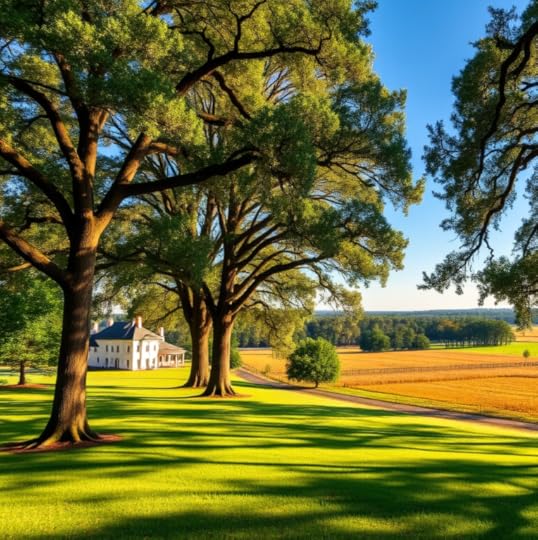
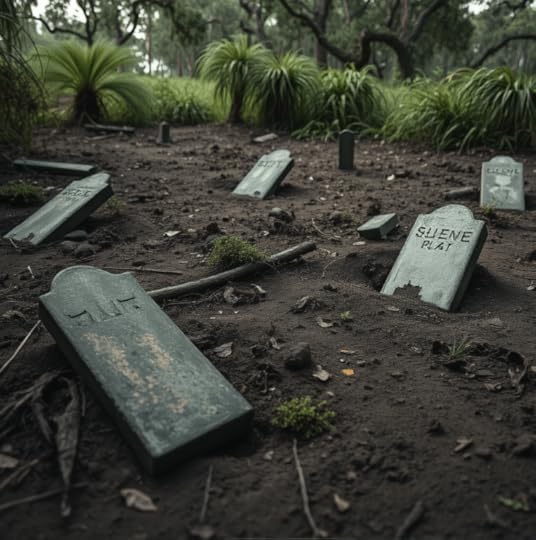
Only recently have some of the gravestones of slaves been uncovered noting that most died between the ages of birth and thirty years of age. Many, of course, were buried in unmarked graves.
Further personal observations during my 2010 tour of downtown Charleston saddened my heart. The only Blacks we saw were street sweepers (sweeping with a broom) and restaurant busboys. No, they weren’t waiters, store clerks, any job making more than $3.00 an hour, or any position that handled money. I made every effort to make eye contact with these workers as I normally do, but all avoided me or looked at my feet while clearing our restaurant table. I was uncomfortable with the palpable inequality, blatant disrespect, and subservient behavior of black people.

I began to recollect my visit to Atlanta in 1978 when I saw duplicate bathrooms side-by-side with the signage Blacks Only and Whites Only thinly white-washed to comply with the Civil Rights law in 1964. That same year in Tennessee, white patrons walked out of a bar when my black girlfriend and I strolled in. There was no coincidence that the name of the town was Whitehaven. (This is a computer-generated example)
The ugly head of Jim Crow was alive and well in the Deep South even though it was outlawed in 1964.
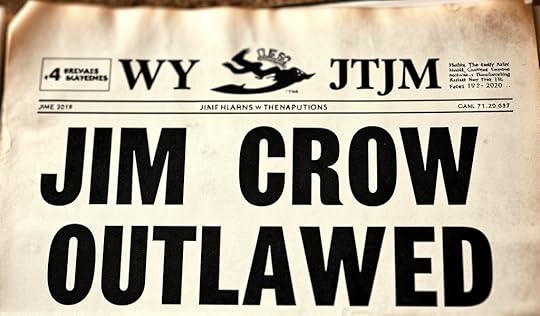
Part II coming in about 2 weeks paying homage to African-American History Month.
I welcome your comments below and your experiences
African-American History Month: Part I, A White Woman’s Perspective
My first visit to the Deep South was in 1978. Everything was new, and I was awestruck by the beauty and magnificence of the historical mansions and plantations. My curiosity about the area was heightened during my second stopover in 1988. However, during my third visit in 2010, a tour guide’s words shook me to my core, and I wondered if I was getting the full story of what happened in this part of the country decades ago.

I took a guided horse and carriage tour to gain a historical perspective. This white tour operator (my photo with his face erased) turned to the all-white tourists and proudly said, “Most people believe that the main reason for the Civil War was because of slavery, but it was actually because of politics and taxes. With the Confederates seceding from the Union, they would take the revenue with them.” Our guide went on to say, “Charleston, in its heyday, was the wealthiest city in the Union.” As the tour continued, he glorified the Confederate Statues and monuments that were on every corner while underplaying the history of slavery.
Some whites on the tour nodded in agreement. Even though I’m white and have a feeble knowledge of American history, I learned from my two prior visits to the Deep South that the wealth and prosperity of this region resulted from slaves. The man-made dikes surrounding the rice plantations, the work in the cotton fields, and the mansion construction were all done by slave labor, which contributed to its wealth.


Only recently have some of the gravestones of slaves been uncovered noting that most died between the ages of birth and thirty years of age. Many, of course, were buried in unmarked graves.
Further personal observations during my 2010 tour of downtown Charleston saddened my heart. The only Blacks we saw were street sweepers (sweeping with a broom) and restaurant busboys. No, they weren’t waiters, store clerks, any job making more than $3.00 an hour, or any position that handled money. I made every effort to make eye contact with these workers as I normally do, but all avoided me or looked at my feet while clearing our restaurant table. I was uncomfortable with the palpable inequality, blatant disrespect, and subservient behavior of black people.

I began to recollect my visit to Atlanta in 1978 when I saw duplicate bathrooms side-by-side with the signage Blacks Only and Whites Only thinly white-washed to comply with the Civil Rights law in 1964. That same year in Tennessee, white patrons walked out of a bar when my black girlfriend and I strolled in. There was no coincidence that the name of the town was Whitehaven. (This is a computer-generated example)
The ugly head of Jim Crow was alive and well in the Deep South even though it was outlawed in 1964.

Part II coming in about 2 weeks paying homage to American-Black History Month.
I welcome your comments below and your experiences
February 1, 2025
Embracing Aging: My Yoga Journey
(All images in this blog are computer generated.)

“I can’t walk that far, I’m too old.” These are my mother’s words as I tried to encourage her out of the car to walk one block to see one of the geysers at Yellowstone. She never got out. “I can see the top of it from the car,” she said. She was only in her 60s.
I didn’t understand then, yet I vowed a different attitude. In the fall of 2024, my writing community challenged us to a topic called A World Unexpected. I wrote a poem about my Yoga community.
Out of my brain to my fingers, this poem revealed itself on the computer screen, limerick verses and all. A catharsis was made; I did not read it initially without crying. My poem, “My Sacred Temple“, was selected without edits for the anthology project to be published in 2025 by Sidekick Press. Below is an excerpt of the poem.
Here are my first and second stanzas:My Sacred Temple is crumbling
45 years of yoga have forsaken me
I can no longer do the full bridge pose
Even though I did it once correctly
My wrists don’t flex
My back won’t bend
My neck is tight
My groins don’t extend
Here are my last two stanzas:
Maybe I’ll complain and feel sorry for myself
But only for a moment
Because I will look for my yoga buddies
And banish my sorrow and judgment
My yoga family inspires me
They have shown me this is just another stage
Because of them and their guidance
My Sacred Temple is full of yoga that doesn’t have an age
Anyone who understands or has practiced yoga knows that it speaks to the Mind, Body, and Soul, its foundation. But I’ll add one more layer to the Mind category: Attitude.
Sure, my mind is calmer and more relaxed with yoga. But I needed an awakening, a reality check, and an attitude adjustment. My yoga family has given me that.
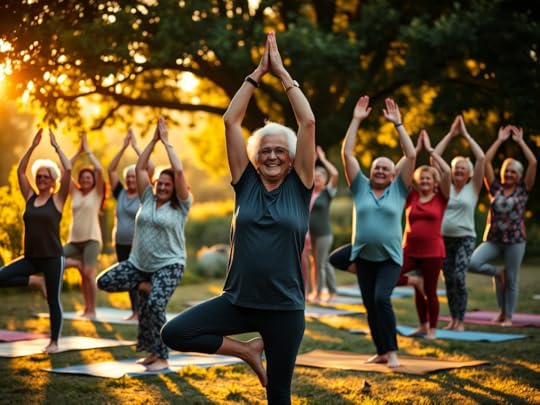
My takeaway from this blog is to take care of your sacred temple and surround yourself with people who give you inspiration and life; and for me, this is my Yoga Family.
I will post the entire poem once it is published.
Namaste!
(I will have hip replacement surgery in May 2025 allowing me to continue my practice with less discomfort with all my yoga buddies around me.)
December 31, 2024
Sunrise, Sunset 2024
As this rosy sunrise brought us 2024, much has happened in our lives and around the world. But as the sun sets this December, I want to end with photos taken throughout the year. I have written about some of the images with others in upcoming blogs. Enjoy, and I wish you a healthy and splendid New Year.
